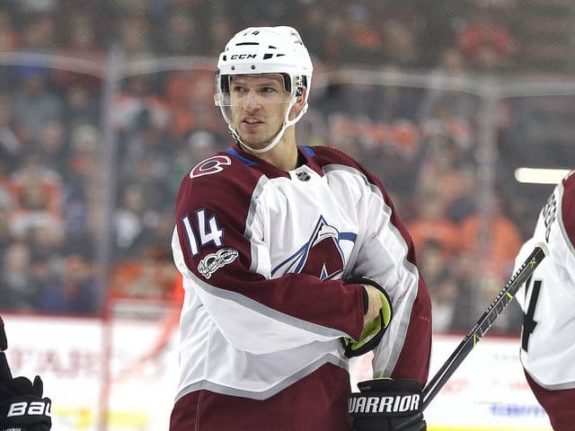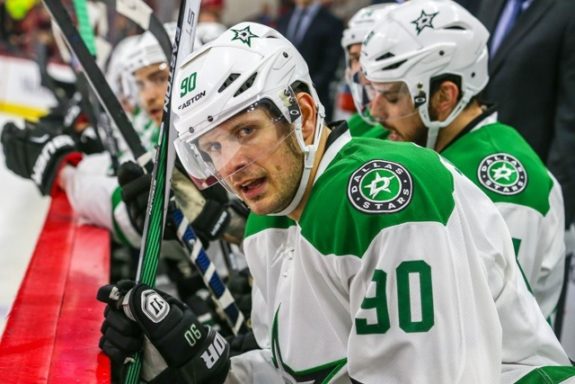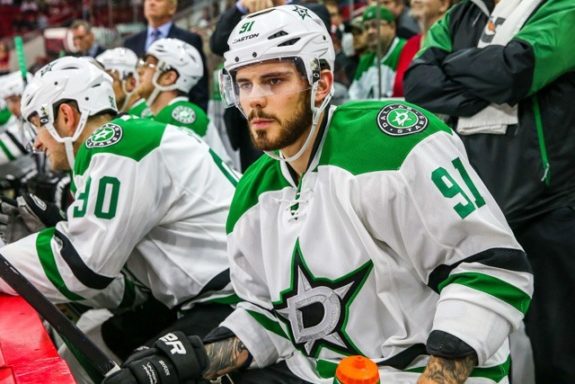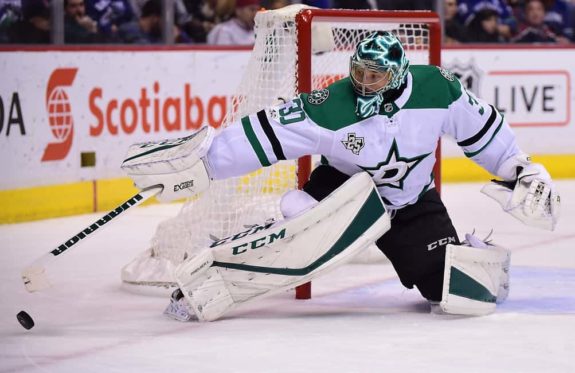For the last few summers, the Dallas Stars have become known for making a big splash. Whether it’s from acquiring new players through trade or free agency, a change in coaching staff or front office, or drafting a generational talent, the team’s exciting offseasons have made up for the lack of playoff hockey. But however quiet or busy the offseason is for the Stars, the question remains the same each and every year: Is the team better?
For Dallas, it’s been a decade of doubt. The glaring issue is, the Stars have enjoyed only two playoff appearances in the last 10 years. For a squad that’s bursting at the seams with young talented players like Tyler Seguin, Jamie Benn, and John Klingberg, their playoff drought is shocking. They are close though.
Season after season, the Stars have come up just short – a couple more wins, a few one-goal games shy of postseason play, an injury or two from playoff glory. But those are excuses. In sports, it’s not about making excuses – every coach will tell you that. It’s about recognizing your flaws and improving. But the adage doesn’t only apply to players, NHL general managers must do the same.
Stars GM Jim Nill has become notorious for making big moves offseason after playoff-less offseason. From securing Seguin, signing Jason Spezza, or bringing in Alexander Radulov, Nill has a knack for making a splash. But after back-to-back quiet postseasons and only two appearances during his tenure, the sixth-year GM’s seat is getting warm.
This offseason, Nill has been relatively quiet, opting to sign depth rather than make a big wave (yet), though the team has been through the rumor mill with some big-name players. With the start of training camp just a few weeks away, the question still remains: Is Dallas a playoff team now? The answer is no. For your pessimistic reading pleasure, I present to you four reasons why the Stars will again fail to make the playoffs.
Disaster in Dallas Depth
The biggest question on every Stars fans’ mind is, where is the secondary scoring? Peruse the Stars’ Twitter feed and you’ll read an armada of armchair GMs talking about the lack of depth. No seriously, go take a peek. But they’re not wrong. There’s a pretty significant disparity down the Stars’ stats sheet.
Dallas has a dominant top line trio. Unfortunately, the other three lines are not bearing their fair share of the weight. Seguin (40 goals), Benn (36), and Radulov (27) were the top three goal and point-scorers for the Stars last season, accounting for 44.5 percent of the team’s 231 goals. A lower number would indicate more depth because, in theory, the scoring would be split evenly between four lines.
Ideally, each line would record roughly 25 percent of the team’s share of goals. A top line that is scoring almost half of their team’s total is an overworked one. To put it in perspective, the lowly Buffalo Sabres’ top three goal-scorers scored 37.4 percent (74 of 198) of the team’s goals. Even the Ottawa Senators had more depth, with their top three factoring in on 31 percent (68 of 219) of the Sens’ goals.

What has fans concerned is the lack of discernible depth players being added to the roster this offseason. Aside from the return of Valeri Nichushkin and the addition of aging winger Blake Comeau, the 2018-19 forward group is relatively the same.
“Dallas has an outstanding No. 1 line with Benn, Seguin, and Radulov, some great pieces on the back end as well and a great goaltender, so if I am able to add some depth to their lineup and create some secondary scoring that will take some of the burden off the top line, I think all the teams in the NHL that are successful have a lot of depth and contributions from different guys.” –Blake Comeau
While Comeau is a serviceable forward who won’t hurt the Stars, he’s also not the only answer to the secondary scoring issues. Nichushkin will also need to prove himself after a couple of up-and-down seasons in Dallas, in which he only scored 23 goals in 166 games. Perhaps new head coach Jim Montgomery’s strategy of “letting the horses run” will help spark the Stars’ lethargic offense. But without any depth additions, Montgomery’s new, unproven system is really their only hope.
Slumping Spezza and Secondary Scoring
I took to Twitter to ask Stars fans some of their reasons for concern, simply asking, why do you feel the Stars will miss the playoffs? The responses I received were similar to the troubles I’ve noticed. Let’s just say, Jason Spezza’s name came up many times.
https://twitter.com/drakeunited/status/1030245455828078593
And…
https://twitter.com/FakMeUp12/status/1030210515023196160
Yes, the second line was mediocre last season. Radek Faksa’s 17 goals were about as good as it got on the second line. But most of the weight of the second line’s slump falls on the shoulders of its biggest disappointment: Spezza. Yes, the $7.5-million center has been a bust but it’s not all his fault. My Twitter friend above is really speaking about the lack of secondary scoring in the lineup.
Here’s the problem. The Stars led the NHL with 522 goals between the 2014-15 and 2015-16 seasons. Over the past two seasons, however, they have dropped to 17th with 453 goals. While being middle of the pack is not terrible, it’s a pretty hefty drop after the previous two seasons; and unsurprisingly, the lack of goals scored during that span correlated with missing the postseason.
Interestingly, there is also a correlation between Spezza’s slump and how well the team does. When Spezza is on his game, his teams rarely lose. When he records at least 60 points in a season, his team has only missed the playoffs three times in his 15-year career, the 2008-09 and 2013-14 seasons, both with the Ottawa Senators, and the 2014-15 campaign, his first as a Star.

During the 2015-16 season, Spezza scored 33 goals and 63 points in 75 games. The result: the Stars had their first 50-win season in a decade and their best finish in points (109) since the 2005-06 season. Last season was by far Spezza’s worst, at least statistically, excluding his 33-game rookie year in Ottawa (seven goals, 14 assists). He managed only eight goals and 18 helpers in 78 games and was benched for the first time in his career; though it only lasted one game before the aging center came back with a bang, notching two goals in his return. That’s what the Stars need more of.
If Spezza can record 30 goals and 60 points – which is certainly not too much to ask from your second-line, $7.5-million center – the Stars have a very good chance of making the postseason. But if last season was any indication that he may be nearing the end of his career, it’ll be another tough season for the Stars.
Poor Power Play
What should be a strength for the Stars has been one of its most glaring weaknesses over the past few seasons. With Seguin, Benn, Radulov, Klingberg and Spezza, Dallas should be scoring on just about every power play. The problem is they are not. Last season, their power play ranked 19th in the league with a 19.3 percent success rate. Believe it or not, that was a slight improvement from the season before. During the 2016-17 campaign, they ranked 20th with a lowly 17.9 percent conversion rate.
The top line scored 63.8 percent of the team’s power-play goals. Ideally, you’d like to see more of a 50-50 split between the two units (see “Disaster at Depth”). Don’t get me wrong, having the 19th-ranked man advantage isn’t the worst, but there’s plenty of room for improvement.
Of the 16 playoff teams last season, only the Anaheim Ducks had a worse power play (23rd) than the Stars. It’s a similar story for the 2016-17 season. Only two playoff teams, the Senators (23rd) and San Jose Sharks (25th) had worse power plays than the Stars and made the postseason. The point is, there’s a correlation between strong power-play units and the team’s ability to make the playoffs.

While we’re at it, the Stars aren’t great at protecting the puck on the man advantage either. Dallas has allowed an NHL-high 36 short-handed goals over the last three seasons. They are the only team to allow 10 or more per season in each of the last three years. Yikes. For the Stars to be a successful team, they will need to cash in on the power play. Last season, Jim Montgomery’s Denver Pioneers’ power play ranked 13th out of 60 teams in DI hockey, so perhaps there is some hope for this season.
Mediocre Netminding
When the Stars signed Ben Bishop to a six-year, $29.5 million contract last summer, the expectation was that Dallas was getting an elite NHL goaltender. While it’s unfair to grade a goalie on one season, that is the only data there is for Bishop in Dallas. The good news is Bishop wasn’t too bad. The bad news is, his knees were.
The 31-year-old netminder was solid in his first year as a Star with a 26-17-5 record, five shutouts, a .916 save percentage and a 2.49 goals-against average. The issue was the knee injuries he sustained toward the end of the season. In early March, the Stars were in the thick of the playoff race but a left knee injury sidelined Bishop for five games and, in his second game back after the first injury, he tweaked his patella again and missed the rest of the season, resulting in an eight-game losing streak down the stretch and a missed opportunity for postseason play.

The unfortunate reality about knee injuries is the likelihood of re-injury. This is one of the many reasons why having a capable backup goaltender is a must in the NHL. And unfortunately for the Stars, Kari Lehtonen wasn’t cutting it anymore. After nearly a decade in Dallas, Lehtonen was excellent at times but overall was just a serviceable backup, and mediocrity won’t win you a Stanley Cup. After filling in for the injured Bishop at the end of the season and posting a 4-6 record, Lehtonen sealed his free agency fate and played his last game as a Star.
One of the biggest priorities for Nill this offseason was getting a capable backup goaltender. Enter Anton Khudobin. Despite being a bit older than the Stars’ no. 1 netminder, Khudobin stands to be a solid upgrade. Last year with the Bruins, Khudobin posted a 16-6-7 record with a .913 save percentage and a 2.56 goals-against average, similar stats to Bishop.
The hope is the journeyman goalie will provide the depth in net that the Stars have dearly missed for the past few seasons. If Bishop can stay healthy, he’s an elite NHL netminder. If Khudobin can provide a bit of relief, the Stars may have a nice tandem in net.
Pessimism Prospers in Big D
After a decade of mediocrity in Big D, there still isn’t much potential for Dallas to make the playoffs. The Stars are quickly fading and little has been done about it. Hiring a new and unproven head coach and failing to address the secondary scoring problems or the team’s disastrous depth isn’t exactly the offseason moves that Stanley Cup champions make.
But hey, maybe it’ll all work out. However, a much improved Central Division will be even tougher to fight through this season. Another losing season would spell disaster in Big D. Making the playoffs will be a tall task for this young Stars team. An offseason with very little reason for optimism has fans a little on edge heading into October. For now, we wait. Dallas has 82 games they’ll need to fight through. Let’s just hope there are more than that.